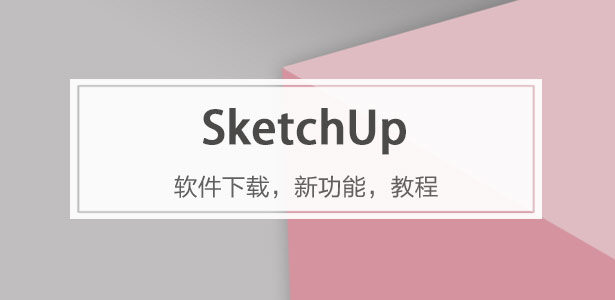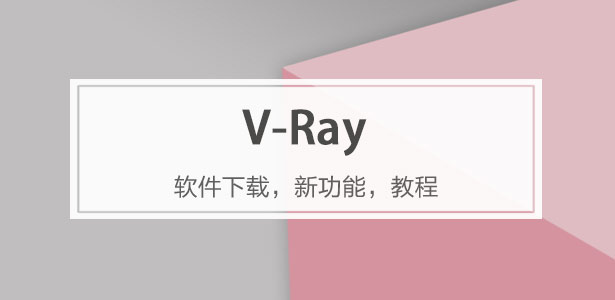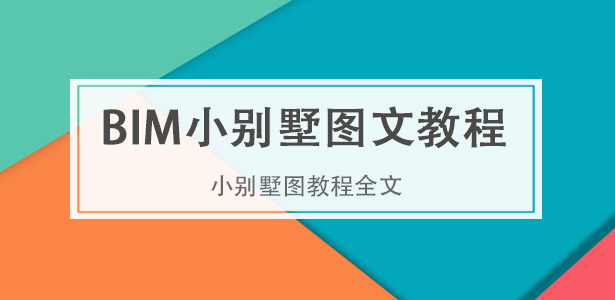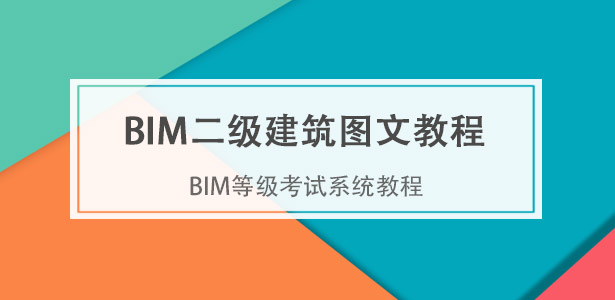* 主體類型
* 企業名稱
* 信用代碼
* 所在行業
* 企業規模
* 所在職位
* 姓名
* 所在行業
* 學歷
* 工作性質
請先選擇行業
您還可以選擇以下福利:
行業福利,領完即止!

下載app免費領取會員



©UK Studio
在北京順義,中糧·祥云小鎮憑借其開放的街區形態、花園式的購物環境和豐富的四季主題活動,吸引著源源不斷的人潮。然而,就在這個充滿活力的商業社區北區主入口,9號樓卻面臨著一個尷尬的困境:地面層人聲鼎沸,二層及以上商業空間卻人流不佳。這引出了一個在商業建筑改造中極為關鍵的議題——當建筑的”面子”成為商業活力的”障礙”時應該如何應對?設計的價值不僅在于美化,更在于通過精準的干預,重新激活空間的商業生命力。
9號樓占據著北區入口的絕佳位置,是整個小鎮人流的必經之地。然而,其原有的建筑立面卻存在著致命缺陷:一道巨大的裝飾性幕墻,導致了三個核心問題:① 商鋪無露出,二層以上的店鋪被完全遮擋,毫無商業可見性;② 人流被遮擋,消費者的視線無法穿透幕墻,無法感知樓上的活動與路徑;③ 無法辨識入口,垂直交通被隱藏,上樓的欲望被徹底壓制。這些問題共同導致了樓上商業經營慘淡,形成了一個與周邊活力格格不入的”商業死角”。
Circulation as Landscape — COFCO Shine Hills Courtyard Renewal
In Shunyi, Beijing, COFCO Shine Hills draws steady crowds with its open-block urban form, garden-like shopping environment, and a rich calendar of seasonal events. Yet at the north gateway of this vibrant precinct, Building 9 faces a paradox: the ground floor thrives while the upper levels remain quiet. This raises a central question in commercial retrofits: what should be done when the building’s “façade” becomes a barrier to vitality? Design is not mere beautification; it is the precise reactivation of space.
Building 9 occupies a prime position at the north entrance, on the route of nearly all foot traffic. Its original façade, however, suffered from a single fatal device—a vast decorative curtain wall—that produced three problems: ① no shop frontage: visibility of tenants above grade was completely blocked; ② broken sightlines: customers could not see through to activity and circulation upstairs; ③ illegible entry: vertical circulation was hidden, suppressing the desire to go up. Together these conditions created a “commercial dead zone” out of step with the surroundings.
▼ 改造后立面全景,Façade panorama (after) ©UK Studio

▼ 改造前建筑狀況,Before renovation ©SA Architects

▼ 改造策略分析圖,Strategy diagram ©SA Architects

拆除即建造
Demolition as Ordering
起初,我們接到的設計任務,是針對這堵裝飾幕墻的設計工作。但是經過現場的感受和分析,我們認為,問題的根源是”遮蔽”,而非形態。因此,我們提出”先拆除,后激活”的核心策略。
我們選擇拆除整面裝飾幕墻,這一動作本身即是一種建造——它將“遮蔽”轉化為“暴露”,為真正的激活創造了先決條件。拆除之后,我們引入了一系列新的設計元素,旨在重新建立地面與高層商業的物理與情感連接。
At first our commission was to redesign the decorative curtain wall itself. On site we realized the root issue was concealment rather than form. Hence the strategy: demolish first, activate later.
We dismantled the decorative curtain wall to expose the structural frame and the commercial interior—an act of making by uncovering. Demolition set the precondition for activation. We then inserted new elements to rebuild both the physical and emotional connections between ground and upper levels.
▼ 晨間陽光下的正立面,Morning façade ©UK Studio
臺階即邀約
Steps as Invitation
建筑前方的噴泉廣場是孩子們的樂園,但家長們卻缺乏一個舒適的休憩和看護區域,活動的人群也缺乏臨時休憩停留的區域。因此,我們改造擴大了原有利用率低下的樓梯,改造成為寬闊的、面向廣場的大臺階。它不再是純粹的交通構件,而是一份空間主動發出的“邀約”,邀請人們停留、坐下,并自然地引導視線與腳步向上探索。家長們可以愜意地坐在這里,視線毫無遮擋地照看在噴泉中嬉戲的孩子,解決了公共空間中的一個具體痛點。
The fountain plaza delights children, but parents lack comfortable places to rest and supervise, and passersby lack places to pause. We therefore expanded an underused staircase into broad grand steps facing the plaza. More than a circulation device, it is an invitation to dwell, guiding both eyes and feet upward. Parents can sit with unobstructed sightlines to the fountain—a precise response to a real need in public space.
▼ 大臺階前后對比軸測圖,Grand steps, before/after ©SA Architects

▼ 社交空間激活,Social activation ©UK Studio

▼ 階梯花園,Stepped garden ©UK Studio

▼ 夜晚的大臺階,Steps at night ©UK Studio

▼ 空間形成向上引導的氛圍,Upward-guiding ambiance ©UK Studio

立面即舞臺
Façade as Stage
在各層,設計增設了外挑的平臺,作為休息和拍照的”打卡點”,同時也成為廣場與樓上相互對望的觀景臺。這些外挑的平臺,將原本平面的建筑‘界面’(Façade)轉化為一個上演著城市生活的立體‘舞臺’(Stage),讓樓上樓下的人們相互觀看,共同構成了一幕幕生動的公共戲劇。為了呼應祥云小鎮”花園式”的商業氛圍,我們將綠植作為重要的設計元素,貫穿于整個立面。在各層平臺精心布置花池和樹木,不僅軟化了建筑硬朗的線條,更將地面層的自然氣息垂直向上延伸,創造出一個多層次的、充滿生機的空中花園。
At each level we add cantilevered decks that work as places to rest and take photos and as mutual viewing balconies between the plaza and the upper floors. They turn the façade from a flat interface into a three‑dimensional stage where urban life plays out; here, people upstairs and downstairs become both actors and audience to each other, composing a vivid public theater, while making activity above visible, reachable and participatory.
▼ 垂直界面改造前后對比軸測圖,Vertical interface, before/after ©SA Architects

▼ 臺階和懸挑平臺,Steps and cantilevers ©UK Studio

▼ 廣場與平臺的對望,Plaza-platforms, mutual view ©UK Studio

▼ 混凝土盒子,Concrete box ©UK Studio

為了呼應祥云小鎮”花園式”的商業氛圍,我們將綠植作為重要的設計元素,貫穿于整個立面。在各層平臺精心布置花池和樹木,不僅軟化了建筑硬朗的線條,更將地面層的自然氣息垂直向上延伸,創造出一個多層次的、充滿生機的空中花園。
To echo Shine Hills’ garden character, planting is threaded through the façade. Planters and trees on each deck soften the hard lines and carry the ground’s greenery upward, forming a layered, living vertical garden.
▼ 與綠植結合的大臺階,Grand steps with planting ©UK Studio

▼ 立體綠化與燈光,Vertical greening & lighting ©UK Studio

▼ 懸挑平臺上的種植池,Planters on cantilevers ©UK Studio

▼ 混凝土與綠植,Concrete and vegetation ©UK Studio

停留即激活
Lingering as Activation
設計將二層連廊從純粹的通行空間,轉變為可停留的社交節點。為此,我們增加了功能性雨棚。其懸挑的姿態首先增強了對地面人群的視覺昭示;其次,它遮陽避雨的功能,結合欄板邊的木質吧臺,鼓勵人們在此停留、喝杯咖啡、俯瞰廣場。因為我們相信,真正的活力源于人們停留的意愿,而非簡單的人流。這些停留、交談、觀望的人們,本身就構成了最生動的立面表情,成為了吸引樓下顧客的動態風景。
The second‑floor gallery is transformed from mere passage into social nodes. Cantilevered canopies announce themselves to the plaza; their shade and shelter, together with timber counters along the railing, invite people to linger, have a coffee and look out over the square. We believe true vitality comes not from mere foot traffic, but from the willingness to linger. Those who stay become moving scenery—a signal that draws others upstairs.
▼ 陽極氧化鋁雨棚與混凝土的對比,Anodized canopy vs concrete ©UK Studio

▼ 雨棚塑造停留空間和視覺昭示,Canopy: linger & signal ©UK Studio

▼ 雨棚細部,Canopy details ©UK Studio

仰望即向往
Looking Up as Longing
我們認為,天花的設計不應僅僅是功能性的,更應是情感性的。它需要將地面人群的視線從水平的廣場,引向垂直的建筑深處,將簡單的“看見”升華為內心的“向往”。為此,我們采用了一體化的格柵策略:在頂層,優雅的弧形格柵一舉三得,既解決了玻璃頂棚顯臟和暴曬的問題,陽光通過格柵滲入,創造戲劇化的光影氛圍;在各層走廊,漫反射發光的格柵吊頂對內為行人創造了柔和的光環境,對外,這柔和而連續的光線,不是強硬的指引,而是一種激發好奇與向往的暗示。
Ceilings are not only functional but affective; they should lift the gaze from the horizontal plaza into the vertical depth of the building, turning seeing into yearning. We adopt an integrated grille system: on the top floor the elegant curved grille solves maintenance and heat‑gain issues of the glass canopy while filtering sunlight into a theatrical play of light and shadow; along the galleries, diffuse luminous grilles create soft interior light and, to the outside, a continuous luminous path that beckons more than it directs.
▼ 剖透視圖,Section perspective ©SA Architects

▼ 漫反射發光天花,Luminous ceiling ©UK Studio

▼ 夜晚從廣場看向二層走廊天花,Plaza to gallery ceiling, night ©UK Studio

▼ 四層天花變換的燈光效果,4F ceiling lighting ©UK Studio

▼ 四層天花變換的燈光效果,4F ceiling lighting ©UK Studio

通過”拆除-暴露-診斷痛點-精準植入”這一系列連貫動作,我們將設計的重點從單純的立面美化,轉向對場地精神、消費行為和用戶體驗的直接回應。
改造后的9號樓,以一種全新的、開放的姿態重新融入祥云小鎮的公共生活。拆除幕墻后,建筑內部的商業活動、人流和燈光被完全釋放,共同構成了一幅充滿活力的、層次豐富的立面圖景。
新立面的材質語言冷靜而克制,以淺灰色混凝土作為基底,但在關鍵的互動界面則介入了陽極氧化鋁等精致的金屬質感。纖細的金屬拉桿支撐著外挑的遮陽棚,使其在視覺上顯得格外輕盈。精心布置的綠植花池作為”垂直花園”的載體,點綴在各層平臺之上,樹影婆娑,不僅為建筑注入了生機,更將小鎮的自然氣息垂直向上延伸。
首層的大臺階成為了廣場的自然延伸和”城市看臺”,吸引著人們在此停留、聚集并向上探索,孩子們的歡笑聲與家長們閑適的身影交織在一起,充滿了生活氣息。二層及三層的”打卡平臺”因功能雨棚的加入而更具活力,人們愿意在欄板邊的吧臺小坐,喝杯咖啡,俯瞰廣場上的熱鬧景象。這些停留、交談、觀望的人們,本身就構成了最生動的立面表情,吸引著更多地面游客的好奇心。
夜幕降臨,多層次的燈光系統被激活。統一的頂棚策略在此刻展現出全部魅力:各層走廊的發光吊頂提供了柔和的主照明,與隱藏在扶手下方、平臺邊緣的線性燈帶共同勾勒出建筑的溫暖輪廓;而在頂層,弧形格柵在燈光下也呈現出與白天不同的質感,共同為整個建筑加冕。
Through a sequence of “demolition—exposure—diagnosis—precise insertion,” the project shifts from superficial makeover to a direct response to site spirit, consumer behavior and user experience.
The renovated Building 9 re‑enters the public life of Shine Hills with a new openness. With the curtain wall removed, interior commerce, flows and light are released to compose a vivid, layered façade.
The new façade is calm and restrained: light‑gray concrete as the background; at key interfaces, refined anodized aluminum. Slender tie‑rods support the cantilevered canopies, giving visual lightness. Planters carry the vertical garden on each platform, extending the town’s greenery upward.
The grand steps become the plaza’s natural extension—urban bleachers that invite people to pause, gather and explore upward. On the second and third floors, the “check‑in” decks gain vitality with the canopies; people sit by the railside bar, drink coffee and watch the scenes below. These lingering, conversing, observing figures are themselves the façade’s most expressive element, attracting visitors from the ground.
As night falls, the layered lighting system comes alive. Luminous ceilings provide soft primary light in the galleries, while linear strips beneath handrails and along edges outline a warm silhouette; above, the curved grille takes on a different presence under light, crowning the building.
▼ 廣場入口視角,Plaza entrance ©UK Studio

▼ 夜景標識與燈光,Night signage ©UK Studio

▼ 多層次空間的社交活力,Layered social vitality ©UK Studio

▼ 夜間在大臺階上休憩的人,Resting on steps, night ©UK Studio

▼ 夜晚臺階的效果,Steps at night ©UK Studio

▼ 夜間立體空間,Night 3D space ©UK Studio

▼ 細部,Detail ©UK Studio

通過設計的干預,9號樓從一個消極的”商業死角”,轉變為一個吸引人流向上、充滿互動與活力的”垂直客廳”。它不再是一個沉默的建筑,而是一個與廣場、家庭和陽光持續對話的開放舞臺。
Through design intervention, Building 9 has transformed from a passive “commercial dead zone” into an upward-attracting, interactive and vibrant “vertical living room.” It is no longer a silent building, but an open stage in continuous dialogue with the plaza, families, and sunlight.
項目圖紙
▼ 改造流程BIM軸測圖,BIM process axonometric ©SA Architects

▼ 一層平面圖,First floor plan ©SA Architects

▼ 建筑剖面圖1,Building section 1 ©SA Architects

▼ 建筑剖面圖2,Building section 2 ©SA Architects

項目信息 | Project Information
項目名稱:中糧·祥云小鎮Courtyard改造更新
設計公司:申江海建筑師事務所
客戶:中糧集團
設計團隊:申江海,張龍瀟,史昊陽,具志堅強、孫春迪
建筑施工圖單位:北京天鴻圓方建筑設計有限責任公司
幕墻及燈光顧問:英海特工程咨詢有限公司
植物設計及實施:荒野造景設計工作室
項目類型:建筑改造
建筑面積:1800㎡
設計時間:2024年3月-2024年10月
建造時間:2025年2月-2025年8月
項目攝影:UK Studio
撰文:張龍瀟
Project Name: COFCO Shine Hills Courtyard Renewal
Design Company: SA Architects
Client: COFCO Group
Design Team: Shen Jianghai, Zhang Longxiao, Shi Haoyang, Gushiken Tsuyoshi, Sun Chundi
Local Design Institute: Beijing Tianhong Yuanfang Architectural Design CO., LTD.
Façade and Lighting Consultant: Inhabit Group
Plant design and implementation: Landscape · Design & Manual
Project Type: Building Renovation
Building Area: 1800㎡
Design Period: March 2024 - October 2024
Construction Period: February 2025 - August 2025
Photographer: UK Studio
Writer: Zhang Longxiao
來源:本文由申江海建筑師事務所提供稿件,所有著作權歸屬申江海建筑師事務所所有。
本文版權歸腿腿教學網及原創作者所有,未經授權,謝絕轉載。

上一篇:拆4座老館建的這座“漂浮地標”,玻璃幕墻輕盈,2025年先開放餐飲區“嘗鮮”
下一篇:[db:標題]
猜你喜歡

BIM建筑|上海院新作:臨港青少年活動中心(臨港少年宮)

BIM建筑|2024,有方編輯部年度內容

BIM建筑|薩夫迪“棲息地”新作:秦皇島海碧臺住宅二期

BIM建筑|競賽結果+一等獎方案發布|AUBE歐博設計,紅樹灣學校項目

BIM建筑|2025更新版!一份全球154座城市的建筑地圖匯總送給你

BIM建筑|都市實踐新作:北京新世紀實驗小學改造
最新課程
推薦專題









































